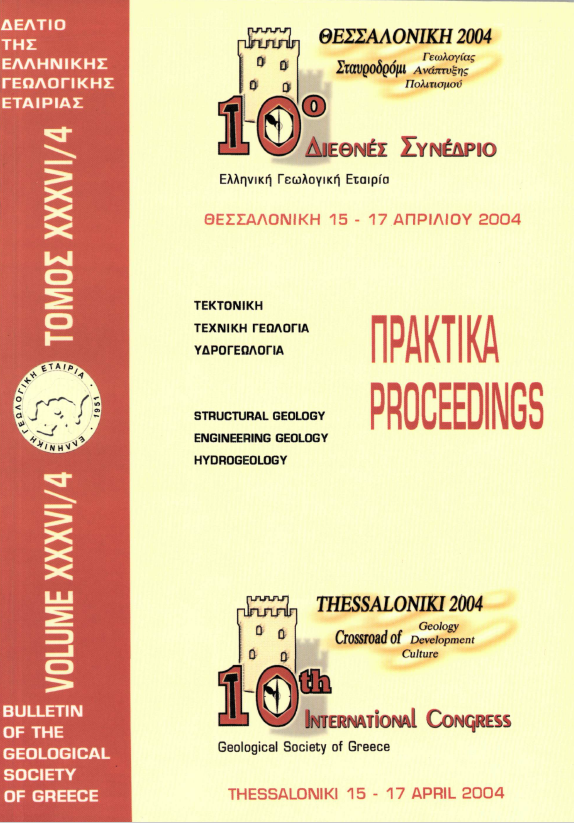LANDSLIDE PHENOMENA IN KANALIA VILLAGE, FTHIOTIDA PR. AND HANDLING THEIR IMPACTS IN THE RESIDENTIAL DEVELOPMENT OF THE AREA
Abstract
In the present paper, the serious landslide phenomena that make difficult the residential development of Kanalia village are studied. Kanalia village is located on a slope of the eastern bank of Roustianitis torrent, the main hydrographie axis of the broader area, which is one of the main branches of Sperchios River. The geological structure of the area (sandstones and siltstones of the Pindos zone flysch) as well as the hydro meteorological and climatological conditions favoring the formation of locally very thick weathering mantle and also the development of seasonal aquifers, were at first studied. As it was confirmed, the main causes of landslide phenomena manifestation are related to the above conditions, to the erosional activity of water in the slopes of the hydrographie axes and finally to the human interventions.
These phenomena are observed in five (5) main sites with most important the one affected the South - Southwest part of the village covering the area from KanaliaGardiki provincial road until Roustianitis torrent downwards. In that case, the periodic re-activations of the sliding phenomena during the last forty years have caused full destruction and abandonment of this part of the village, since no relevant measures have been taken so far. The remaining sites are restricted in some parts of the village road network, without affecting residential zones.
For the protection and development of the residential area of Kanalia village, the following measures were recommended for the improvement of the ground conditions in the slope affected areas: (a) drainage both of the surficial and ground waters in the vulnerable zones, (b) slope supporting works with gabion walls (flexible structures), (c) protection of the stream slopes from erosion and undermining with gabion walls and gully dams, (d) tree plantations, and (e) suitable and appropriate foundation of the new constructions on the stable basement or foundation using specific types, if necessary. It is suggested the application of these measures for the safety of the road network, the good operation of which constitutes a prerequisite for a safe residential development.
Article Details
- How to Cite
-
Ρόζος Δ., & Αποστολίδης E. (2004). LANDSLIDE PHENOMENA IN KANALIA VILLAGE, FTHIOTIDA PR. AND HANDLING THEIR IMPACTS IN THE RESIDENTIAL DEVELOPMENT OF THE AREA. Bulletin of the Geological Society of Greece, 36(4), 1816–1825. https://doi.org/10.12681/bgsg.16652
- Section
- Engineering Geology, Hydrogeology, Urban Geology

This work is licensed under a Creative Commons Attribution-NonCommercial 4.0 International License.
Authors who publish with this journal agree to the following terms:
Authors retain copyright and grant the journal right of first publication with the work simultaneously licensed under a Creative Commons Attribution Non-Commercial License that allows others to share the work with an acknowledgement of the work's authorship and initial publication in this journal.
Authors are able to enter into separate, additional contractual arrangements for the non-exclusive distribution of the journal's published version of the work (e.g. post it to an institutional repository or publish it in a book), with an acknowledgement of its initial publication in this journal. Authors are permitted and encouraged to post their work online (preferably in institutional repositories or on their website) prior to and during the submission process, as it can lead to productive exchanges, as well as earlier and greater citation of published work.



